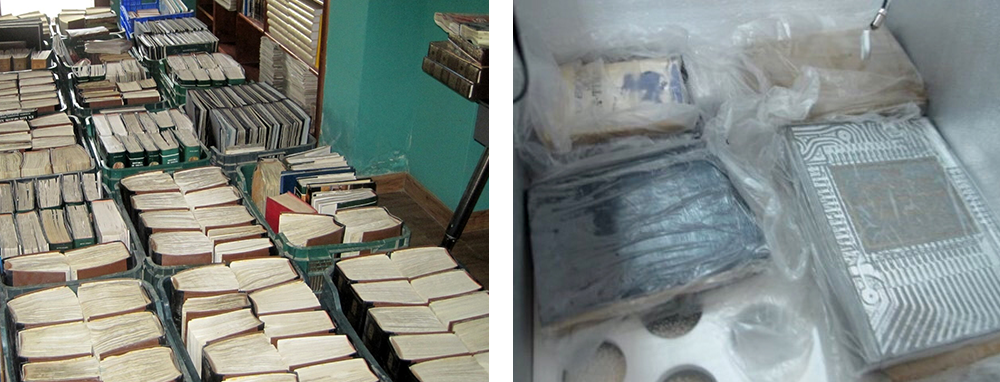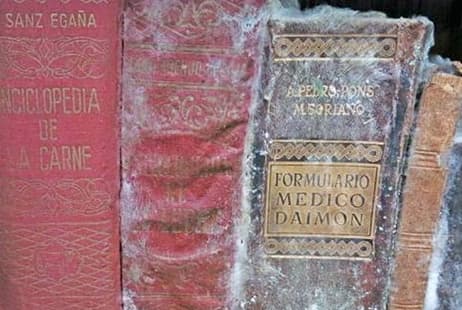Alberto Domínguez Conde
Member of APCAS (Spanish Association of Insurance Adjusters)
Director, HNW & Art Area, Sedgwick Iberia
FUEDI ELAE Loss Adjuster
"Human error", weather events, transport, and cleaning and maintenance accidents are some of the main causes giving rise to most losses to our cultural heritage. In referring to cultural heritage, we mean all the property and assets owned by an individual or an institution that hold traditional, artistic, historic, or archaeological interest for a community. These assets are looked on as important and are assigned a value by society, and they need constant maintenance and special care.
Our cultural heritage is not impervious to losses at the hands of natural phenomena, which by their very nature can cause heavy damage both to artworks and to the venues where they are exhibited or stored. It should also be kept in mind that many of these cultural heritage assets do not benefit from the protection of museums or specialised institutions but are held by private organisations or individuals and may not always benefit from proper protection.
In Spain events of this kind include floods, earthquakes, and even volcanic eruptions and in most cases involve high levels of property destruction. These events commonly result in extensive losses that give rise to claims covered by the Consorcio de Compensación de Seguros.
Exposure to or the absence of light, relative humidity, the height at which works are kept, and the materials in which they are stored are some of the factors that make a difference to the maintenance and care of cultural heritage assets and to the claims adjustment process in case of loss. For that reason, it is essential to identify the special features inherent to each factor with a view to mitigating the risk of suffering a loss and being able to adjust claims with the requisite speed and specialist knowledge.
So it is important to emphasise that cultural heritage assets of this kind require assessments that are unlike those of other types of property. The reasons for this difference lie in their physical characteristics and in their value to society. Losses to cultural heritage assets should be treated differently and should be handled quickly by specialised claims adjusters.
First of all, the claim must be reported without delay. It is important to detect the damage the cultural heritage assets have sustained to be able to decide on the steps that need to be taken to avoid further deterioration.
When a claim is reported, it should be assigned to a loss adjuster who specialises in these matters. Since the items concerned are works of art, collector pieces, antiques, and other objects of artistic, archaeological, or historical value, the loss adjuster in charge needs to be extremely well versed in the field. The adjuster must properly evaluate the damage and to be able to do that must be able to be acquainted with the documents associated with the object of value to avoid further harm or a mistaken assessment.
The next step in losses of this kind entails identifying the damage, an essential step in the assessment. Condition reports play a fundamental role in loss adjustment, because they provide full information on the asset's condition, its imperfections, previous restorations, and the conservation action required by materials that are frail or degraded. It should be noted that while the value of an object is in large measure assigned by society, it also depends on the condition of the object, and values may rise and fall according to the market or with the passage of time.
The condition report is not only beneficial to insurers; it also has advantages for the insured. It allows insurers to determine what action is necessary to protect the works and avert further damage, and affords protection against potential claims for damage that occurred before the policy period; it benefits owners of the cultural heritage asset by enabling them to ascertain what measures need to be taken to protect the works while being cognisant of pre-existing damage or defects.
The condition report should be part of the documentation process carried out by expert adjusters for purposes of record in their assessments. This includes making a photographic record of the inspection, taking measurements, noting down damage or blemishes, and the specialist's recommendation concerning whether more comprehensive evaluation is required. A variety of tools and methods are used to delve deeper into the physical condition of the work. Some that can be mentioned include the use of ultraviolet light, x-rays, infrared light, component analysis, and crack sensors for more in-depth report findings.
After this first expert inspection to disclose the damage to the works concerned and advise the insured about how to manage that damage come repair and appraisal.
In losses of this kind, repair is a priority, because it makes it possible to protect and safeguard the heritage asset at risk when the damage is reversible. This will necessarily involve specialists in the type of loss to avoid alterations to the asset's value.
As mentioned above, appraisal of the value needs to take into account a series of different characteristics and societal factors. That is, appraisal after damage is the result of an interaction between quantitative and qualitative variables taking into account lost value, physical condition, and other aspects.
Companies and organisations in the insurance and claims adjusting industry have been able to set up coordinated strategies of this type involving art experts in recognition of the important role of specialisation in losses of this kind. Today's industry leaders have specialised divisions to handle claims of this kind that are capable of carrying out the process of verifying the risk associated with physical condition up to the time of the loss.
Sedgwick has specialists in this field on its staff, and we have processed a number of losses involving cultural heritage assets. One pertinent case involved a loss to a book collection due to flooding. The books were housed in the basement of a private home. That is, a location with the highest risk of flooding, in less than optimal conditions of lighting and humidity.

A claims adjuster who specialised in this sort of claim was assigned to the case, verified that the loss had been caused by a flood, and was able to organise the relevant management steps that were required. It was ascertained that the book collection would have to be divided into two parts. The first group of books included the more valuable items from an historical standpoint, which were insured. They were moved to an industrial cold store for conservation and were frozen, and the restoration process of thawing and controlled drying was subsequently undertaken.
This procedure took into account the risk to the books posed by thawing, in that in changing from a solid to a liquid the water could warp and stain the paper and damage the printed ink on the pages. The specialised knowledge of the professionals involved enabled the procedure to be carried out in a controlled manner and thus to preserve the content of the books.
The second group of books was lower in value. These books were not insured and had suffered more serious deterioration that made restoration unfeasible. They had been kept at the residence that had been flooded, and they were affected by microbial growth as a result of the conditions in the home's basement. Recovery of these books would have cost more than they were worth, so they could not be restored, and it was decided not to freeze them.
Dividing the books into two groups this way based on their value heightened the differences in condition and the possibility of recovery. The first group of books underwent restoration, the source of the damage was eliminated, and the books were returned to a condition in which they could be handled and digitised to protect their contents.
Our artistic, historical, and cultural heritage is not spared from suffering the effects of weather events or human error that can affect its condition. This makes it advisable to be prepared for these events and to do the advance work of prevention and response to potential situations of this kind. Proper management of these sorts of losses by specialists makes it possible to lessen the damage to the assets and thus to conserve their enormous historical value.

Exposure to or the absence of light, relative humidity, the height at which works are kept, and the materials in which they are stored are some of the factors that make a difference to the maintenance and care of cultural heritage assets and to the claims adjustment process in case of loss. For that reason, it is essential to identify the special features inherent to each factor with a view to mitigating the risk of suffering a loss and being able to adjust claims with the requisite speed and specialist knowledge.